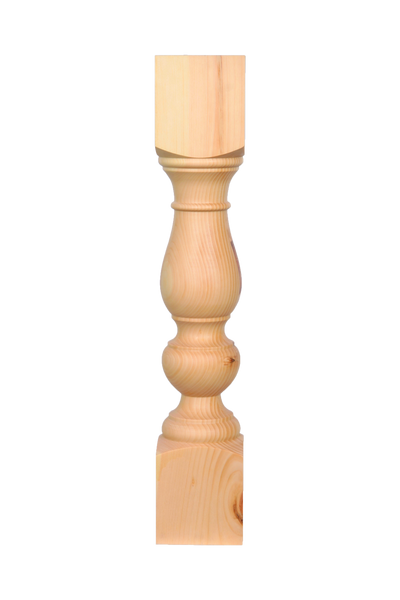Kitchen Island Legs for Modern and Classic Kitchens
Kitchen Island Legs for Modern and Classic Kitchens
Blog Article
Essential Tips for Selecting the Perfect Dining Table for Your Cooking Area
Choosing the ideal dining table for your kitchen is more than simply a matter of preference; it necessitates a complete understanding of your space and demands. The form of the table plays a critical duty; while rectangle-shaped tables suit bigger locations, round ones foster affection, and extendable choices use adaptability. The table needs to balance with your cooking area's aesthetics and suit your family conveniently.
Step Your Room
Choosing the excellent dining table starts with a thorough evaluation of your available area. This foundational action makes sure that the table not only fits pleasantly within the room but additionally matches the overall layout and performance of your eating location.
It is necessary to leave appropriate room for chairs to be pulled out and for people to move around the table without blockage. A basic guideline of thumb is to allow at the very least 36 inches of clearance from the edge of the table to the nearby wall surface or piece of furniture.
Furthermore, assume about the number of people you commonly captivate and whether you require additional space for guests. Choosing an extendable table can supply flexibility, allowing you to suit varying varieties of restaurants. By precisely gauging your space, you prepared for picking a table that improves both the appearances and performance of your eating location.
Select the Right Shape

On the other hand, round tables are superb for smaller sized kitchen areas or intimate events, as they advertise discussion by permitting everybody to deal with each other. They additionally supply a feeling of comfort and can fit well in tighter spaces because of their lack of sharp corners. Oval tables provide the finest of both globes, incorporating the size of rectangle-shaped tables with the intimacy of round ones, making them versatile for numerous settings.
Square tables are an additional choice, specifically matched for square-shaped spaces. They produce a symmetrical and modern appearance, cultivating an equivalent dining experience for all seated.
Product Factors To Consider
When choosing an eating table, material considerations are extremely important in determining the table's sturdiness, upkeep demands, and overall visual. Wood is a timeless option, offering ageless appeal and toughness.
Glass-topped tables give a modern-day, smooth appearance and can make a space appear larger due to their transparency. However, they need constant cleansing to stop fingerprints and smudges. Additionally, solidified glass is recommended for its added stamina and security.

Lastly, composite materials like MDF (Medium-Density Fiber board) or plywood are affordable alternatives. These products can simulate the appearance of solid wood yet might not use the exact same longevity. They are usually less complicated to tidy however can be susceptible to water damages if not effectively secured.
Inevitably, the choice of material ought to align with your kitchen's style, your way of living requires, and your budget plan constraints. (kitchen island legs)
Seating Capacity and Comfort
How do you determine the appropriate seats ability and comfort for your table? This important action includes assessing both the physical area available in your kitchen area and your house's useful demands. Begin by determining your kitchen location to guarantee the table fits conveniently, allowing a More hints minimum of 36 inches of clearance around it for easy activity. Think about the number of people that usually eat with each other, as this will influence the table size. For a family of four, a rectangular table of 48 inches long or a round table with a 48-inch diameter is typically enough.
Convenience is equally crucial. The height of the table ought to preferably be around 30 inches, providing a balanced ergonomic position for seated restaurants. Chairs should have a seat elevation of 18 to 20 inches to guarantee a comfortable dining posture. In addition, think about the chair layout; supportive back-rests and upholstered seats can enhance dining comfort significantly, particularly during long term meals.
Style and Aesthetic Appeal
Picking a table that suits your style and appearance includes balancing individual taste with the existing style of your eating room. The table is often the centerpiece of the kitchen area, and its layout should match the overall style of the space. Whether your kitchen area flaunts a contemporary, minimal appearance or a rustic, farmhouse charm, the table you select should balance with these aspects to develop a natural and inviting atmosphere.
Take into consideration materials very carefully; wood uses an ageless appeal and can range from rich mahogany for a typical look to lighter oak for a modern feel. Metal and glass tables, on the various other hand, can introduce a smooth, industrial side to your kitchen. Do not neglect the table's form-- rectangle-shaped tables are versatile and traditional, while round and oblong options can cultivate a much more see post intimate dining experience.
In addition, pay attention to surfaces and details. A troubled surface might add check personality and warmth, whereas a glossy surface area can contribute to a tidy, modern aesthetic. Ultimately, your table need to not only in shape perfectly into your kitchen area's design yet likewise reflect your individual style, boosting the room both functionally and visually.
Verdict
In conclusion, choosing the optimal dining table for a kitchen area demands mindful assessment of area, form, product, seating capability, and aesthetic harmony. Ultimately, an appropriate eating table fosters a welcoming environment and fits the home comfortably, thus improving the dining experience.

When selecting a dining table, material factors to consider are paramount in identifying the table's longevity, upkeep needs, and overall visual. For a family of 4, a rectangular table of 48 inches long or a round table with a 48-inch size is typically sufficient.
Don't ignore the table's shape-- rectangular tables are classic and versatile, while round and oblong options can promote a much more intimate dining experience. kitchen island legs.
Report this page